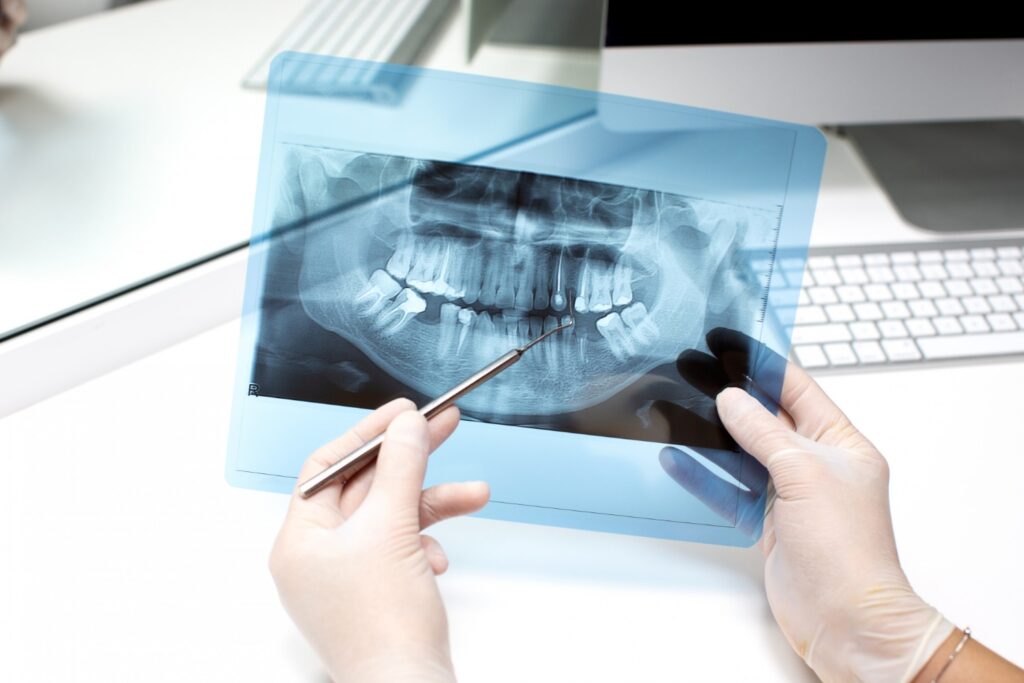Dental implants are a relatively new option for people with serious tooth problems. Pioneered about 50 years ago, dental implants have grown in popularity since the 1970s as an alternative to dentures or bridges to replace unhealthy or missing teeth.
Although only 6% of Americans have implants now, by 2026 that number is set to grow to 23%. When a patient has enough healthy bone in the jaw to accommodate the implant (which may require surgery to create), the results can be as comfortable, functional and natural looking as the person’s original teeth.
“Implants are an extremely worthwhile investment,” says Roger Levin, D.D.S., who is CEO of the dental management consultancy Levin Group, Inc. “They have a tremendous benefit in the quality of life.”
What Are Dental Implants?
The dental implant, which has traditionally been a small titanium or titanium-alloy screw that a dentist inserts into the jawbone, serves to hold a custom-made dental crown in place. The Food and Drug Administration has since approved zirconia implants for use as well. Zirconia, a hard white ceramic material, has grown significantly in popularity in the last five years. If there isn’t sufficient bone to support the implant, you’ll need a bone graft. Bone deficiency can be due to aging, gum disease, injury or other causes.
If the implant is going into the upper jaw, the bone around the sinuses needs to be built up, potentially requiring the patient to undergo a sinus lift beforehand. Dental implants aren’t suited for children whose facial bone structure is still developing, although older teens can have them done. Implant surgery is also less likely to be successful in smokers and people who take immunosuppressive drugs or have just undergone head or neck radiation therapy, have uncontrolled diabetes or are nighttime teeth grinders. (Your dentist can assess whether you’re a teeth grinder, a condition known as sleep bruxism, because of the telltale damage it causes).
Dental Implants: Materials, Procedures, and Considerations
Traditional vs. Zirconia Implants
Dental implants have traditionally been small titanium or titanium-alloy screws that dentists insert into the jawbone to hold custom-made dental crowns in place. However, the Food and Drug Administration (FDA) has also approved zirconia implants as an alternative. Zirconia, a hard white ceramic material, has seen a significant rise in popularity over the last five years due to its aesthetic and biocompatible properties.
Bone Requirements and Grafting
For an implant to be successful, there must be sufficient bone to support it. If bone deficiency exists—whether due to aging, gum disease, injury, or other causes—a bone graft may be necessary. In cases where the implant is placed in the upper jaw, the bone around the sinuses may need to be built up through a procedure called a sinus lift before implantation can proceed.
Patient Suitability and Risks
Dental implants are not suitable for children whose facial bones are still developing, though older teens may be candidates. Certain factors can reduce the success rate of implant surgery, including:
Smoking
Use of immunosuppressive drugs
Recent head or neck radiation therapy
Uncontrolled diabetes
Nighttime teeth grinding (sleep bruxism)
Dentists can identify sleep bruxism by examining telltale signs of damage on the teeth. Patients with these risk factors should discuss alternatives or additional precautions with their dental provider.
Dental implants, traditionally titanium screws, now include FDA-approved zirconia options. If bone loss exists (due to aging, injury, or disease), a graft or sinus lift may be needed. Smokers, teeth grinders (bruxism), or those with diabetes, immunosuppression, or recent radiation face higher risks. Teens may qualify, but implants aren’t recommended for children with developing jaws. A dentist assesses candidacy by checking bone density, oral health, and grinding damage. Proper planning ensures stability and longevity.
Source: https://www.forbes.com/health/body/dental-implants-guide/


